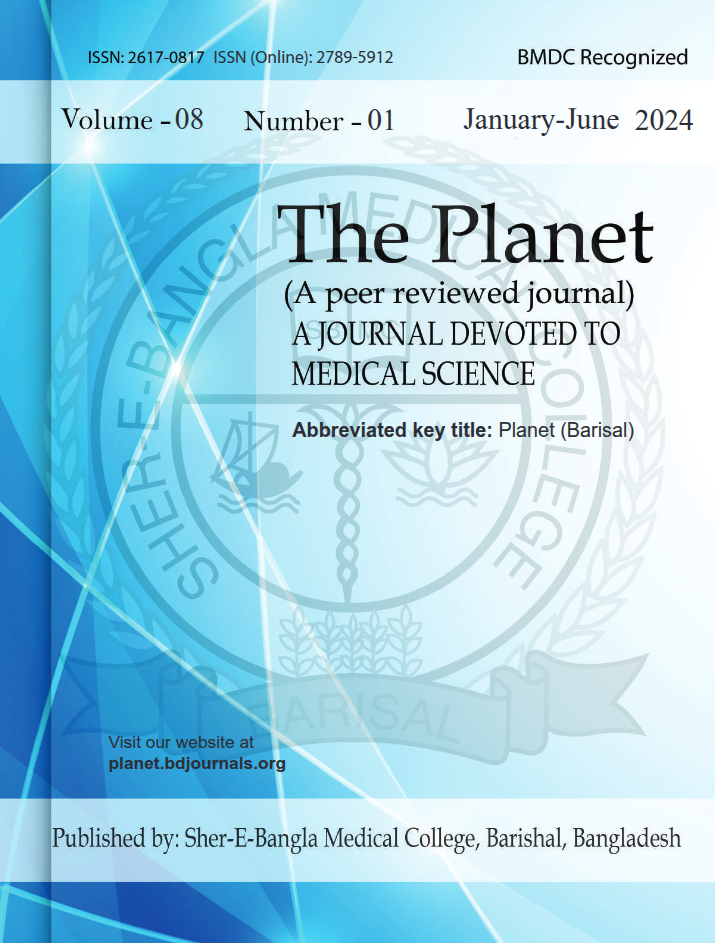Effect of Preoperative Oral Beta Blocker Versus Intraoperative I/V Beta Blocker in Hypotension Anesthesia Under G/A in Elective Surgery — A Comparative Study
Published 28-12-2024
Keywords
- Coronary artery disease,
- neck circumference,
- waist circumference,
- anthropometry,
- cardiovascular risk predictors
Copyright (c) 2024 The Planet

This work is licensed under a Creative Commons Attribution 4.0 International License.
How to Cite
Abstract
Background: Hypotensive anaesthesia is commonly used during surgeries to maintain optimal surgical conditions by lowering blood pressure. Beta-blockers are often employed to achieve controlled hypotension, but the optimal method of administration—preoperative oral versus intraoperative intravenous (IV)—remains a subject of debate. The study aimed to access the effect of preoperative oral Beta blocker versus introperative I/V blocker in Hypotension anaesthesia under general anesthesia. Methods & Materials: This randomized controlled trial was conducted at the Jalalabad Ragib-Rabeya Medical College Hospital and other private hospitals of the Sylhet city, from January 2021 to January 2024, and patients were randomly assigned to either Group A (Oral Beta-blocker) or Group B (IV Beta-blocker). The data were analyzed using Statistical Package for Social Sciences (SPSS). Result: Group A (oral beta-blocker) demonstrated better hemodynamic stability, with smaller deviations in MAP (±5 mmHg vs. ±12 mmHg) and heart rate (±8 bpm vs. ±15 bpm), and fewer hypertension episodes (10% vs. 27%) compared to Group B (IV beta-blocker). Group A also had significantly less blood loss (350 mL vs. 480 mL) and lower transfusion rates (8% vs. 15%). It achieved faster hemodynamic control (12 minutes vs. 20 minutes) with less vasopressor use (5% vs. 18%). Postoperatively, Group A had fewer complications, including myocardial ischemia (5% vs. 12%), arrhythmias (3% vs. 9%), and hypotensive episodes (10% vs. 20%). Conclusion: This study concludes that preoperative oral beta-blocker administration offers superior hemodynamic stability, reduced blood loss, fewer postoperative complications, and improved patient satisfaction compared to intraoperative IV beta-blocker administration. Therefore, oral beta-blockers can be considered as the preferred method for managing hemodynamic stability during hypotensive anaesthesia.



